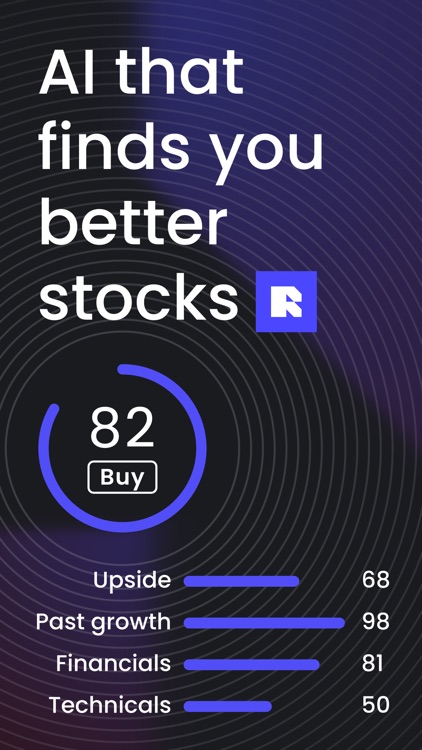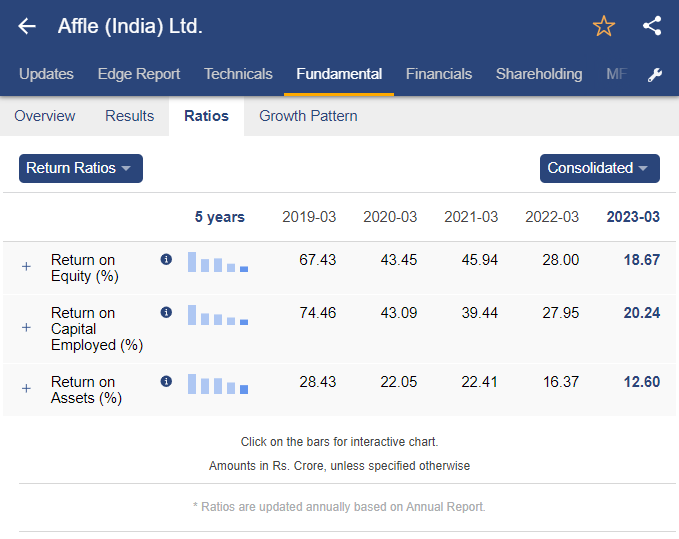20 Best Facts For Picking Trader Ai Review Sites
20 Best Facts For Picking Trader Ai Review Sites
Blog Article
Top 10 Tips On Assessing The Security And Privacy Of Ai Analysis And Stock Prediction Platforms
As they typically handle sensitive financial data, and even personal information, security and protection of the data is crucial. In the event of a data breach or misuse, it could lead to financial and reputational damage. These are the top 10 suggestions to evaluate the security and privacy of these platforms
1. Take into consideration encryption of data
Secure transmission of data: Make sure your platform is using secure protocols (e.g., TLS/SSL) to protect data that is transmitted between your device and the servers.
Verify encryption at rest. Check to see if sensitive information is encrypted on the platform's servers using strong standards of encryption (e.g. AES-128).
End-to-end encrypted communications: Make sure that the platform you're using has encryption that works end-to-end to protect any sensitive data.
2. Assess the authentication mechanisms
Two-factor authentication (also known as copyright) is an excellent method of increasing security.
Biometric authentication: Check if your platform provides biometric login for mobile apps (e.g. fingerprint or facial recognition).
Password policies - Check that the platform is able to enforce strong password policies (e.g. length, requirements for length or complexity requirements).
3. Check for regulatory compliance
Financial regulations: Make sure your platform is compliant with all relevant financial laws (e.g. SEC FINRA MiFID II).
Data privacy laws: Ensure you comply with any laws relating to data privacy that apply to your company (if applicable) (e.g. CCPA or GDPR).
Audit certifications. Check whether the platform is certified by third-party security assessments or is accredited (e.g. SOC 2 and ISO 27001).
4. Review the Data Access Controls
Role-based access: Make sure the platform has access control based on role (RBAC) to limit access to data to only authorized users.
Verify if you are able to establish different levels of access for users or teams.
Activity monitoring Check to determine if your platform keeps track of and monitors user's activities.
5. Evaluate Vulnerability and Manage
Regular updates Make sure to update the software frequently to ensure it's always current.
Penetration testing : Check to determine if the platform has been subjected to regular penetration tests in order for it identify and rectify security flaws.
Check for bugs bounty programs. These are designed to motivate external security researchers (such such as Google) to share security issues.
6. Evaluate Data Privacy Policies
Transparency: Read the privacy policy of the platform to know how data is shared, collected, and used.
Data reduction: Only collect data necessary to support the functionality of the platform.
Third-party sharing: Find out whether your platform is sharing information with third-party partners and, if so what are the terms.
7. Secure API use should be checked
API security: Ensure the API of the platform API uses secure authentication methods (e.g., OAuth, API keys) and encrypts data exchanges.
Rate-limiting: Check if the API has a rate limit to stop abuse and brute force attacks.
Check for access logs. The platform must log API use and access in order for auditing and monitoring.
8. Review Incident Response and Recovery
Incident response plan: Ensure that your platform is equipped with an incident response plan for handling data breaches or security incidents.
Check the platform's notification policies to determine if the platform informs its users in a timely manner in the event of an incident of security.
Backups of data: Make sure your platform is regularly backing up its data, and also has a disaster-recovery plan.
9. Check out Physical Security Measures
Data center security: Ensure that the platform's servers are hosted in secure data centers with physical security measures (e.g. surveillance, access control).
Redundancy: Verify if the platform has redundant systems in order to guarantee that data is available in the event of hardware failure.
Verify the geographical distribution of the data to ensure resilience.
10. Test privacy controls on users
Data deletion: Ensure that the platform lets you delete all your personal data when you decide to end your use of it.
Privacy settings: Make sure you have privacy settings on your platform to control what data is available or shared.
Anonymization: Verify if your data is encrypted for machine learning or analytics.
Bonus Tips
User feedback and reputation Read user reviews and feedback to assess the platform's record regarding security and privacy.
Trial period: Experience the privacy and security features of the platform with a free demo.
Customer Support: Make sure that the platform has the capacity to provide robust support for security issues.
Follow these tips to evaluate the privacy and security level of AI platforms for stock prediction and analysis. So your personal information and financial details are safe. A secure trading platform is not only a way to safeguard your assets, but it also builds confidence and trust. Take a look at the most popular free ai trading bot examples for site recommendations including ai copyright trading bot, chart ai trading, trader ai intal, free ai trading bot, ai trading platform, ai trading tools, ai chart analysis, best ai stock trading bot free, ai stocks, ai investment app and more.
Top 10 Tips For Assessing The Regulatory Compliance Of Ai Stock For Predicting Or Analyzing Platforms
Compliance with regulatory requirements is an essential element when it comes to evaluating AI platform for analyzing and predicting stocks. Compliance assures that the system operates within the legal framework, safeguards the privacy of users, and conforms to the financial laws, thus reducing the chance of legal issues or financial sanctions. Here are 10 top tips to assess the compliance of these platforms.
1. Verify your license and registration
Regulatory bodies : Verify that the website is registered and licensed by the relevant financial regulatory authority (e.g. SEC, FCA, ASIC, etc.) in your nation.
Verify the broker partnership: If your platform integrates with brokers and brokers, be sure they are licensed and regulated.
Public records: Visit the site of the regulator to determine whether the platform is licensed or if it's ever violated the law.
2. Verify Data Privacy Compliance
GDPR If a platform is operating within the EU or offering services to EU users, the platform should comply with the General Data Protection Regulation.
CCPA -- California Consumer Privacy Act: Check for compliance with California users.
Data handling policies: Read the policy of the platform's data privacy to make sure that it outlines exactly what data users' information is stored, shared and collected.
3. Examining Anti-Money-Laundering/AML measures
AML policies: Make sure that your platform is equipped with a solid AML policy that can detect and stop any form of money laundering.
KYC procedures: Check that the platform adheres to Know Your Customer (KYC) procedures to verify identity of the user.
Transaction monitoring: Verify that the platform is monitoring transactions in order to identify suspicious activity and notify authorities.
4. Make sure you're in compliance with Trading Regulations
Market manipulation: Ensure the platform is equipped with measures to protect against market manipulation such as spoofing or wash trading.
Order types. Check that the platform complies with all regulations regarding order type (e.g. there is no illegal stop loss hunting).
Best execution: Make sure to determine if the platform adheres best execution practice, which ensures that trades will be executed at the lowest cost.
5. Assessment of Cybersecurity's compliance
Data encryption: Ensure that the platform safeguards your data during the transfer process and in rest with encryption.
Incident response. Verify that there is clearly identified incident response plan on the platform to deal with cyberattacks as well as data breaches.
Certifications: Make sure the platform holds cybersecurity certifications (e.g., ISO 27001, SOC 2).
6. Transparency, Disclosure and Evaluation
Fee disclosure - Ensure that the fees are fully disclosed, even extra charges or hidden costs.
Risk disclosure: Verify whether the platform includes clear information about risk. Especially for high-risk and leveraged trading strategies.
Performance reporting: Make sure the platform produces transparent and accurate performance data to its AI model.
7. Check for the compliance of international regulations
Trans-border trade. If you intend to do international trading, ensure that your platform adheres to all applicable regulations.
Tax reporting: Check the platform's tools or reports that allow users to adhere to tax laws.
Compliance with sanctions: Ensure that the platform adheres to international sanctions and is not allowing trading with banned entities or countries.
8. Examining Audit trail and Record-Keeping
Transaction records: For compliance and auditing reasons, make sure that the platform maintains complete records of all transactions.
Logs of user activity: Check whether the platform records user activity, including logins, trades, and changes to the account settings.
Audit-readiness: Find out if the platform will be able to produce all required documentation and logs needed for an audit by a regulatory agency.
9. Evaluation of Compliance with AI Specific Regulations
Algorithmic trading rules If the platform for trading has algorithms, make sure it is in compliance with the rules of MiFID II for Europe or Reg. SCI for the U.S.
Fairness and Bias: Make sure that the platform is monitoring, and mitigates, biases within its AI models in order to ensure fair trading.
Explainability: Some regulations require that platforms explain AI-driven predictions or choices.
Examine the User Feedback and the Regulatory Histories
User reviews: Conduct user studies to determine the platform's reputation regarding the regulatory conformance.
Regulatory history: Check whether the platform has any records of violations to the law such as fines, penalties, or sanctions.
Third-party inspections: Check if the platform is subject periodic third-party inspections conducted by an independent party in order to verify the platform's compliance.
Bonus Tips
Legal consultation: Consult with an expert in law on the conformity of the platform to applicable rules.
Trial period: Use a free trial or demo to evaluate the platform's conformity features and documentation.
Customer Support: Ensure that the platform offers customer support for any questions or issues related to compliance.
By following these tips that you will be able to assess the compliance with regulations of AI platforms for analyzing and predicting stocks and ensure that you select an option that is within legal guidelines and protects your interests. Compliance not only minimizes the risk of legal violations, but it also helps build confidence and trust in the services of the platform. See the best ai based trading platform tips for website recommendations including ai trading tools, ai stock prediction, chart ai trading, trading chart ai, best stock analysis website, trader ai app, ai chart analysis, stock ai, using ai to trade stocks, ai stock picks and more.